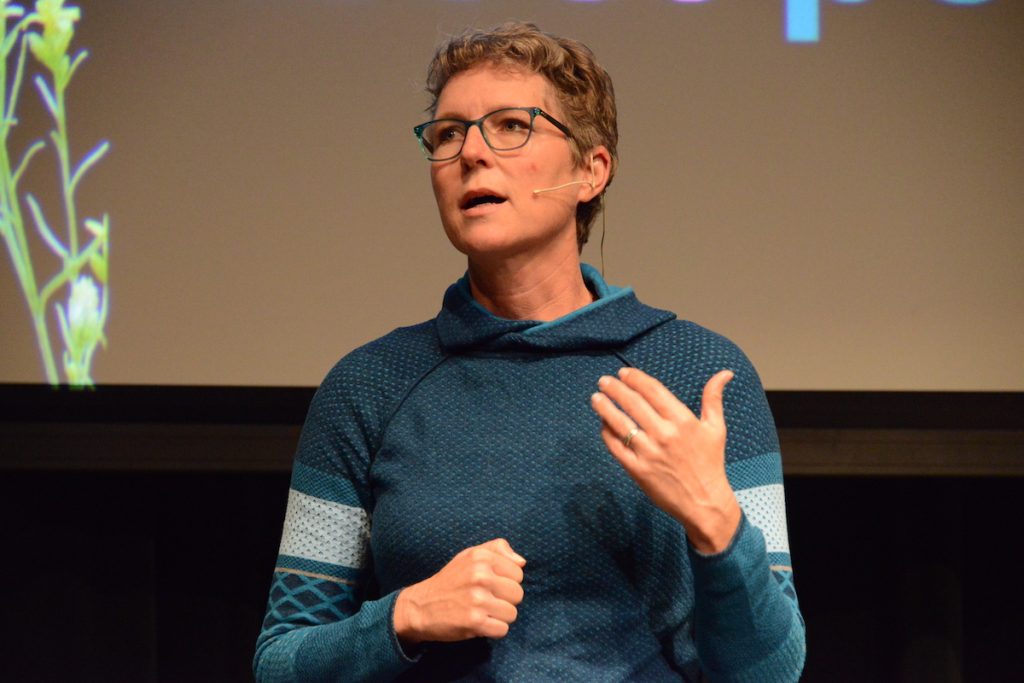Dr. Winifred Frick Helps Separate Bat Facts From Fiction
Bats often get a bad rap. They’re construed as the spooky creatures that haunt us on Halloween, accompanying vampires and the like. They’re falsely assumed to always carry rabies and drink blood. When in fact, bats—the world’s smallest mammal, and the only one that can fly—of which there are more than 1,400 species, make up a quarter of all mammalian diversity, and they play a key role in insect control, plant pollination, and seed dispersal.
On April 19, Dr. Winifred Frick—one of the world’s foremost experts on bats—spoke to students and faculty in the Smith Theater to sort fact from fiction when it comes to these creatures, and to illuminate the critically important role that bats play in our ecosystem—why it’s important that we work to protect them, and how we might do just that.
Dr. Frick is the Chief Scientist at Bat Conservation International, an organization working to protect bats and their habitats through conservation, education, and research efforts. Dr. Frick is also an associate research professor of ecology and evolutionary biology at University of California, Santa Cruz, where she earned her bachelor’s degree in environmental studies. Her research focuses on how bat populations respond to both human-generated and natural stressors, and how we can best use science to inform conservation efforts. Dr. Frick and her team combine quantitative approaches with empirical field research—primarily in the Sonoran Desert, Sea of Cortez, and Baja California Peninsula—investigating disease ecology, population and behavioral ecology, and aeroecology.
In Hall, Dr. Frick focused on the great diversity in bat populations—on where the animals live and what they eat, on how their physical features and physiology vary from species to species, and how humans contribute, positively or negatively, to their protection and habitat conservation.
One illuminating story that she shared, about the nature and rewards of her work, featured her team’s collaboration with Rwandan conservationists and officials as they sought to find the elusive (and potentially extinct) Hills’ horseshoe bat, last seen in 1981 in Rwanda’s Nygunwe National Park. With the help and guidance of a generous team of local collaborators, and a harp trap, on the tenth morning of their ten-day exploration, Dr. Frick and her team trapped and successfully identified the first Hills’ horseshoe bat seen in the wild in four decades.
“I find scientific research incredibly rewarding and satisfying in many ways,” Dr. Frick has said. “I love all aspects of research—from being in the field and observing nature, to designing a study, to answering interesting or important questions, to analyzing the data we’ve collected in the field, and finally writing up what we’ve learned to share with others. People often think science isn’t creative, but I find research to be an incredibly creative process. Good science combines natural curiosity, a dedicated work ethic, and remembering to have fun.”
Dr. Frick earned her Ph.D. at Oregon State University and is internationally renowned for her research on the disease ecology and impacts of White-nose Syndrome, a fungal disease that has killed over six million bats in North America. After her presentation she answered students’ many questions about bats and about her work with them.

